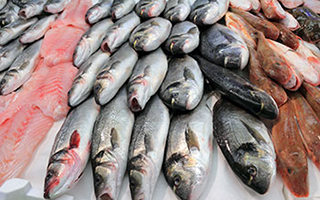Introduction
Mercury
Mercury is a metal that is toxic to living organisms. It exists in several forms, some of which occur naturally in the environment.
Metallic or elemental mercury – an odorless, shiny, silver-white liquid – is commonly used in thermometers, barometers and fluorescent light bulbs. Metallic mercury is extremely dangerous. A few drops can generate enough fumes to contaminate the air in a room. Furthermore, skin contact with mercury can result in its absorption into the blood stream and potential health problems.
Mercury poisoning may include the following symptoms:
- Impairment of coordinated movements such as walking or writing
- Impaired speech, hearing and peripheral vision
- Mood swings and memory loss
- Muscle weakness
- Numbness and a "pins and needles" feeling in the hands, feet and sometimes around the mouth
- Skin rashes
Methylmercury, one of the metal’s forms, can attach to small particles in the soil or water. From there, methylmercury can enter and accumulate in the food chain. For example, small fish may eat food containing methylmercury particles, and some of those particles remain in their tissues. When larger fish eat those smaller fish, most of the methylmercury originally in the small fish is then stored in the larger fish. Methylmercury is found in both freshwater and saltwater fish and marine mammals.
What is NIEHS Doing?
NIEHS, FDA, and EPA studied health effects of methylmercury on humans from consuming contaminated fish. As part of a healthy eating pattern, eating certain fish may offer heart health benefits and lower the risk of obesity. But consuming large quantities of contaminated fish can increase exposure to mercury. Pregnant women who eat fish high in mercury on a regular basis run the risk of permanently damaging their developing fetuses. Children born to these mothers may exhibit motor difficulties, sensory problems and cognitive deficits. Find a link to advice about eating fish below.
NIEHS Research Efforts
- Dragonflies Provide Insight Into Mercury Pollution Across U.S. National Parks – NIEHS-funded researchers at Dartmouth College contributed to research that found mercury concentrations in dragonflies were similar to those found both fish and amphibians from the same locations. The association allows researchers to assess the threat mercury may pose to ecosystem function.
- Grand Lake Watershed Mercury Study – Researchers from Harvard University partnered with the University of Oklahoma Health Sciences Center to examine the relationship between fish consumption and mercury exposure in people who regularly eat fish from the Grand Lake watershed in Oklahoma.
- NIEHS-funded Program Informs International Mercury Reduction Efforts – Mercury contamination is a global problem. Celia Chen, Ph.D., of the Dartmouth College Superfund Research Program Center, works to better understand mercury – its movement through the environment and its human and ecosystem health effects. Chen is an internationally recognized researcher on the accumulation of mercury in aquatic food webs.
Further Reading
Stories from the Environmental Factor (NIEHS Newsletter)
- Mercury Exposure Affects More Than Just the Brain — Muscles, Too (February 2022)
- Moderate Fish Intake by Moms Linked to Health Benefits for Kids (May 2020)
Additional Resources
- Advice About Eating Fish: For Women Who Are or Might Become Pregnant, Breastfeeding Mothers, and Young – FDA and EPA issued advice about eating fish, including the best choices and types of fish to avoid (2021). The advice features an easy-to-read chart and frequently asked questions and answers.
- EHP Mercury Collection – Mercury exists in multiple forms within our environment, including elemental, inorganic, and organic. The toxic effects of mercury exposure are clear and have led to measures to minimize further environmental contamination and human contact.
- Indigenous Health Collection – Environmental Health Perspectives (EHP) present a collection of papers focusing on indigenous peoples who overall experience a disproportionate burden of several chronic diseases, compared with other racial and ethnic groups.
- New Insights on Mercury Exposure From Artisanal Gold Mining – A newsletter article from the NIEHS Global Environmental Health program (2018).
Related Health Topics
This content is available to use on your website.
Please visit NIEHS Syndication to get started.


